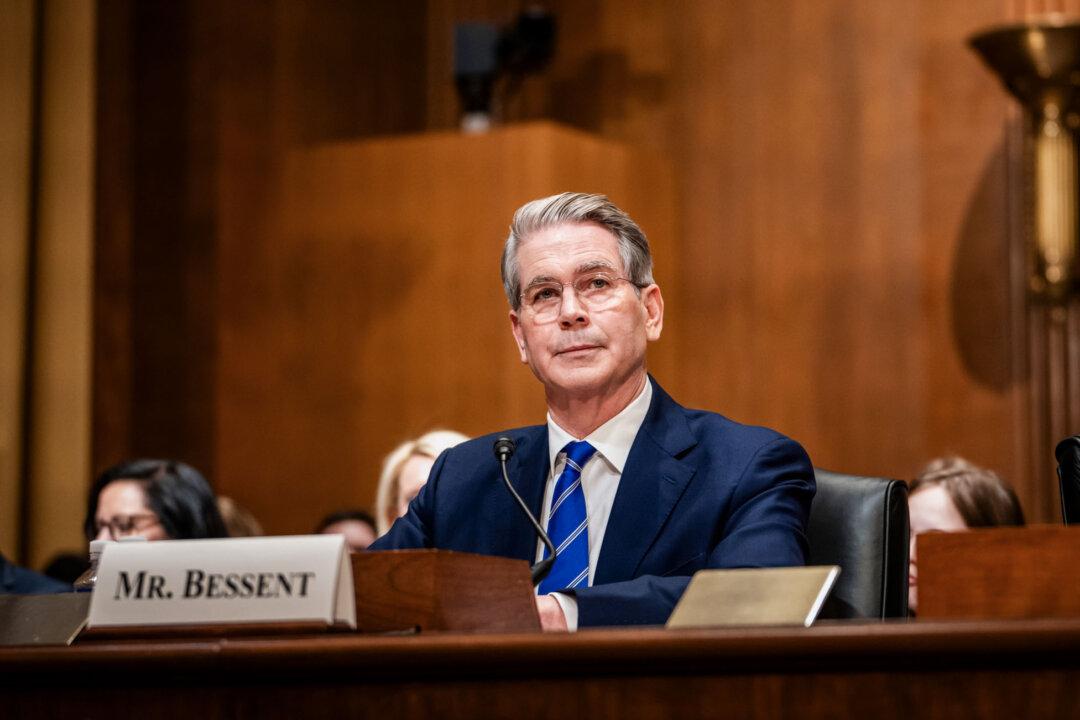The real GDP growth rate (inflation-adjusted) was 2.1 percent in 2022, down from 5.9 percent in 2021. Most of the expansion was driven by gains in consumer spending, private inventory investment, exports, and nonresidential fixed investment. A drop in federal government spending and residential fixed investment offset a portion of these increases.
Personal consumption expenditures (PCE) jumped 1 percent quarter over quarter, down from the 1.4 percent estimate. This was the smallest expansion since 2020. In addition, PCE prices slowed to 3.7 percent in the three months ended in December, down from 4.3 percent.
The GDP price index—a gauge of adjustments in the prices of goods and services produced in the United States and exported to other nations—slowed to 3.9 percent, down from 4.4 percent. This matched economists’ expectations.
Consumer spending contributed 0.7 percent to the GDP growth rate in the final quarter of 2022, down from the previous projection of 0.93 percent and the first estimate of 1.42 percent. Spending on goods was revised a bit higher, from negative 0.5 percent to negative 0.1 percent. Services spending rose less than initially expected, to 1.6 percent instead of 2.4 percent.
Net exports were adjusted lower, to 0.42 percent, down from 0.46 percent.
Government spending contributed 0.65 percent to the October-to-December expansion, up from 0.63 percent in the second forecast.
What About the 1st Quarter?
Looking ahead to how the first quarter will perform, the Federal Reserve Bank of Atlanta’s GDPNow model estimate suggests the economy grew 3.2 percent in the first quarter.There is growing concern that the banking turmoil could bring the U.S. economy closer to a recession.

“But right now, it’s unclear how much of an imprint these banking stresses are going to have on the economy. But it’s something to watch very carefully.”
The SEP suggests that the central bank is penciling in one more rate hike this year, with the median federal funds rate being 5.1 percent in 2023. But although the futures market is anticipating rate cuts later this year and heading into 2024, Fed Chair Jerome Powell doesn’t envision pivoting on the institution’s year-long tightening campaign. However, he also noted that the Fed could raise interest rates if needed.
At the March FOMC policy meeting, officials raised interest rates by 25 basis points, to a target range of 4.75 to 5 percent.
In recent weeks, recession odds have increased, with Goldman Sachs raising the probability of a contraction from 25 percent to 35 percent in the fallout of the Silicon Valley Bank and Signature Bank failures.
“We have seen a tightening of lending standards in the banking system, and my suspicion is that they will tighten further from here and potentially could tighten quite sharply, at least in the near term,” Goldman Sachs Research’s Richard Ramsden, business unit leader of the financials group, said.
“On balance, my guess is that banks will take a view that this could result in either a near-term recession or a deeper recession than you would have had without this event.”
Jason Brady, president and CEO of Thornburg Investment Management, anticipates a recession by early 2024 at the latest, referring to a “trilemma of conditions.”
“I still forecast a recession later this year or by early 2024,” he wrote in a note. “A ‘trilemma’ of conditions—uncertainty in the banking system, a challenging economic outlook, and the Fed’s required commitment to price stability—intensified the market’s anticipation of a recession.”
John Lynch, chief investment officer at Comerica Wealth Management, is looking at the bond market for recession signals.
“Therefore, we continue to believe that economic contraction looms. Solid employment remains a favorable backdrop, in our opinion, suggesting a mild recession.”
Although the gap has narrowed in the past month, the recession-indicating two- and 10-year spread remains at negative 55 basis points. This is a widely watched metric, because an inverted yield curve suggests investors expect a decline in long-term interest rates amid a worsening economic performance.
The Fed’s preferred recession indicator—the spread between the three-month and 10-year Treasury—is about negative 20 basis points.
At the post-FOMC meeting news conference this month, Powell acknowledged that there is still a pathway to a soft landing.





